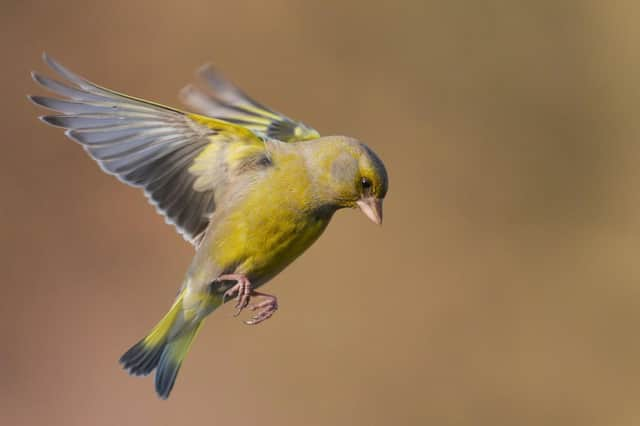New 'red list' assessment finds more than a quarter of UK bird species are seriously threatened


Some 70 of the UK’s 245 assessed birds are “red-listed” – meaning they are of highest conservation concern because of severe declines, numbers well below historical levels or the risk of global extinction, the latest Birds of Conservation Concern 5 assessment shows.
This update to the UK red list for birds, carried out by a coalition of the UK’s leading bird conservation organisations, is longer than it has ever been, with the figure nearly double what it was in the first overview carried out during 1996.
Advertisement
Hide AdAdvertisement
Hide AdThis assessment, carried out by groups including the British Trust for Ornithology, RSPB, Wildlife Trusts and National Trust, looks at 245 species regularly occurring in the UK, Channel Islands and Isle of Man and categorises them as red, amber or green-listed depending on how threatened they are considered to be.
The RSPB’s CEO, Beccy Speight, said the assessment was “more evidence that the UK’s wildlife is in freefall and not enough is being done to reverse declines”.
She warned: “As with our climate this really is the last chance saloon to halt and reverse the destruction of nature.
“We often know what action we need to take to change the situation, but we need to do much more, rapidly and at scale.”
Advertisement
Hide AdAdvertisement
Hide AdNewly red-listed species include swifts, house martins, the ptarmigan, purple sandpiper, Montagu’s harrier and greenfinch.
Overall, the red list has grown by three species since the last assessment in 2015, with 11 more birds red-listed, however six have moved to amber status and two are no longer assessed.
The amber list has grown by seven species while the green list – of those birds least under threat – has shrunk by nine species. Previous Birds of Conservation Concern reports have highlighted the plight of farmland, woodland and upland birds with this report adding more farmland and upland species to the Red list.
Director of Research for the Game and Wildlife Conservation Trust, which carries out annual Big Farmland Bird Count, Dr Andrew Hoodless, said: “We need to better understand the effects of climate change on some species, as well as the impacts of changing habitats and food availability along migration routes and in wintering areas of sub-Saharan African migrants.
Advertisement
Hide AdAdvertisement
Hide Ad“For many red-listed species, however, improving breeding success in the UK is vital – we can and must make real and immediate improvements to this through better engagement with UK farmers, land managers and gamekeepers to encourage adoption of effective packages of conservation measures.”
The report also shows the status of long-distance migrants to Africa is continuing to decline.
Swifts have moved from the amber list to red in the face of a 58 percent drop in their populations since 1995 and house martins join them due to a 57 percent fall since 1969, joining other birds which migrate to sub-Saharan Africa such as cuckoos and nightingales.
Greenfinches have gone from green-listed to the red list following a 62 per cent population crash since 1993 due to a severe outbreak of the disease trichomonosis.
Advertisement
Hide AdAdvertisement
Hide AdThe conservationists said the disease was spread by contaminated food and drinking water, and urged homeowners to clean bird feeders regularly and temporarily stop putting out food if sick birds are seen in order to slow the spread.
The experts also raised concerns over wildfowl and wader populations which spend the winter in the UK, such as Bewick’s swans, the goldeneye and dunlin, which have joined the red list, with pressures including illegal hunting abroad, ingesting lead ammunition and climate change which sees some birds that breed in the Arctic ‘short-stopping’ in eastern Europe rather than flying to Britain.
Leach’s storm-petrel and kittiwakes are among the birds on the red list which are threatened with global extinction. Rook has moved from the green to amber list, due to now being classed as vulnerable to extinction at a European scale.
Over 20 per cent of the European population of rooks breed in the UK, and in Wales numbers declined by 58 percent between 1995 and 2018.
Advertisement
Hide AdAdvertisement
Hide AdThere were also warnings about the future for curlews in Wales, with suggestions the species could be extinct as a breeding bird within the next 12 years. Habitat loss and unfavourable habitat management are some of the reasons behind the decline of almost 70 per cent in numbers since 1995.
Another bird moving high up on the amber list is wheatear. Numbers of the upland songbird are plummeting, which the report said has triggered a need to understand the cause of their decline.
In better news, successful reintroduction projects have helped the white-tailed eagles – which became extinct in the UK as
breeding birds more than a century ago – move off the red list onto the amber listing.
Advertisement
Hide AdAdvertisement
Hide AdThe song thrush, pied flycatcher and grey wagtail have been moved from red to amber, though they remain close to the threshold for the most at-risk category, as have the redwing and black redstart.
Colonisation of the UK by new birds – much of it down to human-induced climate change – has seen five new species including the great white egret, cattle egret and black-winged stilt added to the latest review.
Comment Guidelines
National World encourages reader discussion on our stories. User feedback, insights and back-and-forth exchanges add a rich layer of context to reporting. Please review our Community Guidelines before commenting.